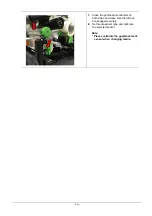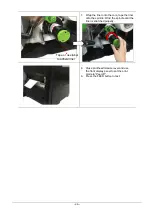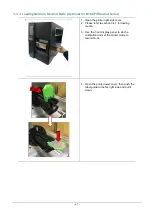
- 34 -
5. PAL
TM
Print and Program Overview
Printers featuring PAL
TM
Print and Program utility can be used in several ways in any
given environment. This section describes 3 common ways this advanced capability is
used. For help and assistance determining the best way to use this utility in your
situation, please consult your sales representative.
PALSECURE ON DEMAND™
Also available is PALSECURE ON DEMAND™ Label Reprints: allows healthcare
professionals to print secure data on labels and wristbands anywhere in the hospital
–
no network connection required. This solution provides label printing on demand, using
automatic encryption of patient data and decryption only with an authorized
printer/scanner combination. Please enquire with your sales representative for more
information.
Traditional Printing
This environment represents the most common use of printers. Generally, a single print
job (PAL
TM
print sequences) generates a single label. In this role the PAL
TM
Print and
Program interpreter accepts the print job, performs the required operator processing
and prints the; label, tag, or ticket. Using a Windows driver in conjunction with a
Windows application program is a typical way to print in this environment. Alternatively,
PAL
TM
print sequences may also be generated by any host application written to take
advantage of this powerful language. When a PAL
TM
capable printer is used this way,
no special “PAL
TM
program” must be loaded on the printer. Print sequences generated
by a Windows driver or host program are simply sent to the printer resulting in print
output just like traditional printers.
Legacy Data Stream Interpretation
PAL
TM
Print and Program capable printers uniquely address applications where
upgrading to modern cost-effective technology is desired. Often cost-prohibitive
software reprogramming to change a data stream prevents an organization from
moving to new printing technologies.






























